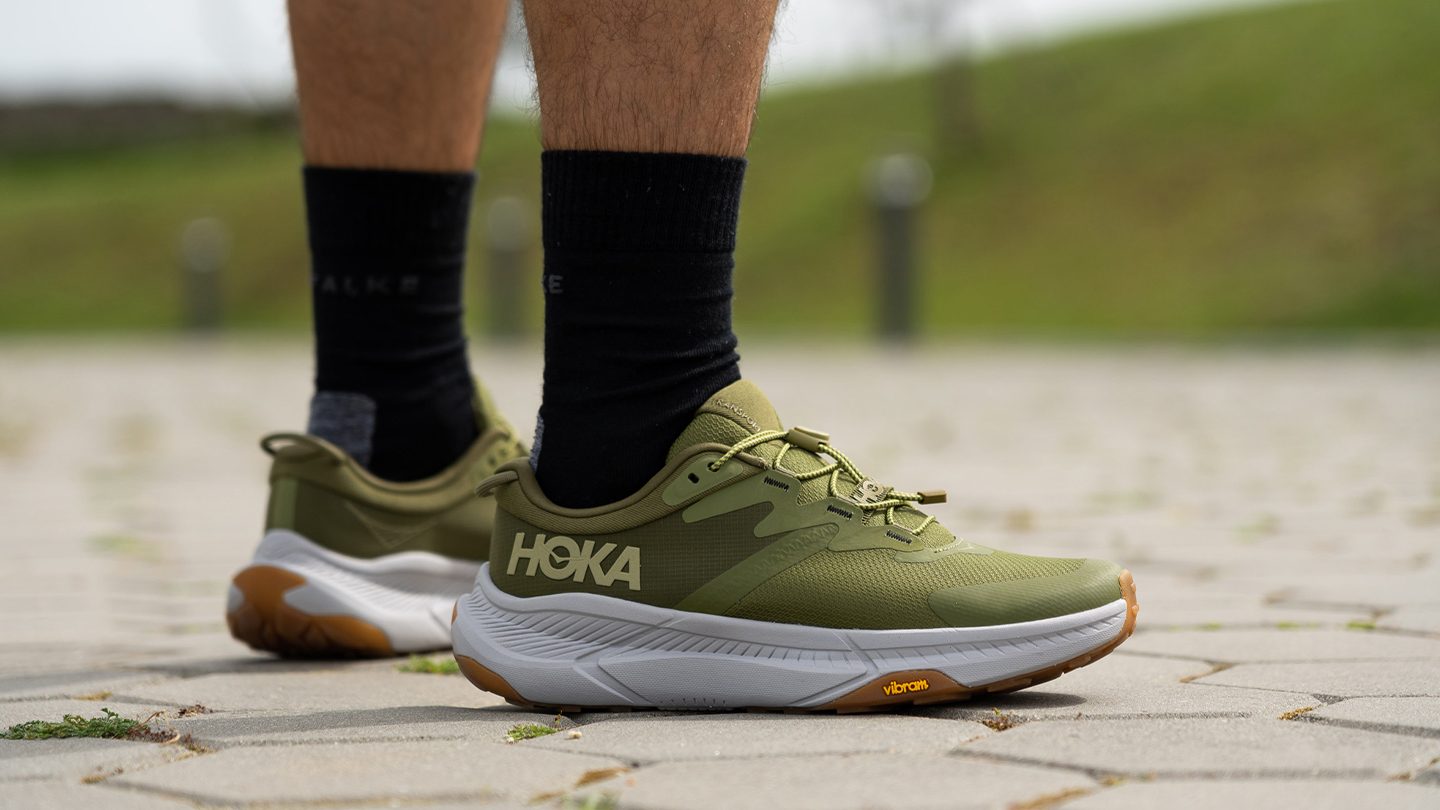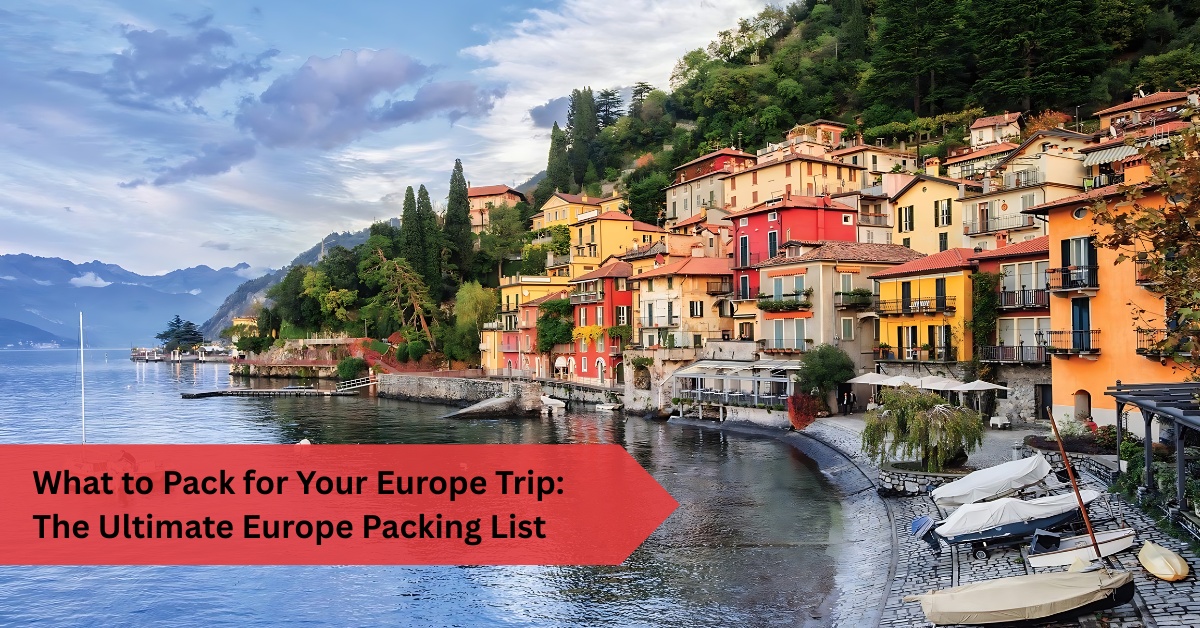Introduction:
Traveling to Europe is a dream for millions of people every year. From strolling the cobblestone streets of Paris, to admiring the architecture of Prague, to relaxing on the beaches of Greece, Europe offers an unmatched variety of experiences.
What to Pack for Your Europe Trip includes travel essentials like passport, insurance, and cash, plus layered clothing, comfy shoes, and season-appropriate outerwear. Add toiletries, medications, a universal adapter, and a power bank, and keep safe with secure bags and copies of key documents.
However, while planning your flights and accommodations is important, packing smartly is just as essential. A poorly packed suitcase can make your trip stressful, uncomfortable, and even costly.
This guide will provide you with everything you need to know about what to pack for your European trip. Whether you’re heading for a week-long city break, a backpacking adventure across multiple countries, or a month-long trip combining business and leisure, this article provides a detailed, comprehensive checklist with practical tips to keep your luggage light, organized, and effective.
In This Article, we discuss “What to Pack for Your Europe Trip.”
1. Travel Essentials: Documents and Money:
Before even thinking about clothes and gadgets, your travel documents should be your first priority. Without them, your trip will not even begin.
- Passport and Visa: Ensure your passport is valid for at least six months beyond your return date. Some European countries also require visas depending on your nationality, so double-check requirements early.
- Travel Insurance: Accidents, flight cancellations, or lost luggage can ruin a trip. Always carry both digital and printed copies of your insurance policy.
- Emergency Information: Carry copies of your ID, emergency contacts, and embassy addresses. Save them on your phone, but also in hard copy in case your phone is lost or stolen.
- Money: Most European countries accept credit cards, especially Visa and MasterCard. However, it’s wise to carry €50–€100 in cash for taxis, small cafés, or public bathrooms where cards aren’t accepted. Use an RFID-blocking wallet or money belt to prevent digital theft in crowded areas.
Pro Tip: Keep your passport, wallet, and phone in separate places. Losing all three at once can be a nightmare.
2. Clothing: Packing for Comfort and Style:
Clothing is often the hardest part of packing because it’s tempting to bring everything “just in case.” The secret to packing clothes for Europe is layering and versatility.
- Tops: Pack a mix of 5–7 tops, including t-shirts, blouses, and lightweight sweaters. Neutral colors like black, navy, beige, and white work best since they’re easy to mix and match.
- Bottoms: Two or three pairs of pants/jeans and one pair of shorts or a skirt (depending on season).
- Dresses: One or two casual dresses or a versatile maxi dress can be styled up or down.
- Outerwear: A light jacket in summer or a warm coat in winter. A packable down jacket is a space-saver for colder months.
- Scarf/Shawl: Doubles as a fashion accessory, a blanket for chilly flights, and a cover-up for entering churches or mosques.
- Sleepwear and Underwear: Don’t forget comfortable pajamas and enough socks/underwear for at least 7 days.
Seasonal Wardrobe Strategy:
- Spring (March–May): The Weather is unpredictable. Pack layers like cardigans, light jackets, and waterproof coats. A compact umbrella is essential.
- Summer (June–August): Hot in the south but mild in the north. Cotton and linen fabrics are breathable, while shorts and sundresses work for coastal regions. Bring modest options for cathedrals and mosques.
- Autumn (September–November): Warm early, but cold by November. Pack scarves, sweaters, and ankle boots. Rich autumn colors like burgundy or olive blend well with European street fashion.
- Winter (December–February): Northern and Eastern Europe can be freezing. Thermal layers, wool socks, gloves, and insulated coats are non-negotiable. For southern areas, a medium coat plus layers works fine.
Cultural Etiquette: In Italy and France, casual but stylish outfits are appreciated. In conservative areas like rural Poland or religious sites in Spain, modest attire is expected. Dressing thoughtfully helps you blend in and feel comfortable.
3. Shoes: The Most Important Decision:

Shoes can make or break your European trip. You’ll often walk 15,000+ steps a day on uneven surfaces, so comfort is non-negotiable.
- Walking Shoes: Choose cushioned, supportive, and ideally waterproof sneakers. Popular options include Adidas Ultraboost, Allbirds, or lightweight hiking shoes.
- Casual Shoes: Stylish sneakers or loafers for going out to dinner or walking around cities. Europeans dress smart-casual, so avoid overly sporty looks in restaurants.
- Seasonal Shoes: Sandals for Mediterranean beaches, ankle boots for fall, or insulated boots for snowy winters.
Shoe Care and Packing Tips:
- Breaking Them In: Always break in new shoes at least two weeks before travel. Wear them on walks and test them with travel socks.
- Packing Shoes: Stuff shoes with socks, belts, or small items to save space. Use shoe bags to prevent dirt from touching your clothes.
- Avoid These Mistakes: Don’t pack high heels (cobblestones will destroy them), brand-new dress shoes (they’ll cause blisters), or too many options (three pairs max is ideal).
- Socks Matter Too: Invest in moisture-wicking socks. They reduce odor and prevent blisters, especially in hot summers or long hikes.
Pro Tip: A lightweight pair of foldable flats or sandals is perfect for hostel showers, beach trips, or casual evenings.
4. Toiletries and Personal Care:
Toiletries take up space and weight, so be strategic:
- Daily Essentials: Toothbrush, toothpaste, deodorant, shampoo, conditioner, soap/body wash, hairbrush.
- Skincare: Moisturizer, sunscreen (SPF 30+), lip balm, and any specific face products you use.
- Health Items: A basic first aid kit with plasters, antiseptic cream, painkillers, and hand sanitizer.
- Medications: Bring prescriptions in original packaging with a doctor’s note if necessary.
- Compact Tools: Nail clippers, tweezers, and a razor.
Pro Tip: Use refillable silicone bottles for shampoo and lotion. This keeps everything carry-on safe and eco-friendly.
5. Electronics and Gadgets:
Europe is highly digital, but plugs and voltages differ from other regions.
- Universal Adapter: Europe uses multiple plug types. A universal adapter with USB ports is the most convenient option.
- Power Bank: For long sightseeing days when your phone doubles as a map, camera, and guidebook.
- Phone and Charger: Download offline maps (Google Maps, Maps.me) and a translation app before you leave.
- Camera (Optional): While modern phones are excellent, photography enthusiasts may prefer a DSLR or mirrorless camera.
- Headphones: Noise-canceling headphones make flights and trains far more enjoyable.
If you’re working remotely, don’t forget a lightweight laptop or tablet.
6. Luggage: Carry-On vs Checked Bag:

Choosing luggage depends on your travel style.
- Carry-On: Ideal for budget airlines (which often charge for checked bags) and frequent train travel. Stick to 40L–45L backpacks or small rolling suitcases.
- Checked Bag: Useful for trips longer than three weeks, winter travel with bulky coats, or if you need space for souvenirs.
Pro Tip: Use packing cubes to keep your clothes organized and easy to access without unpacking everything.
7. Regional Packing Tips:
Europe’s diversity means your packing list should adapt to your destinations.
- Mediterranean (Italy, Greece, Spain, Portugal): Summers are hot, so bring breathable clothing, hats, sunglasses, and swimsuits. Always carry a shawl for visiting churches.
- The Alps (Switzerland, Austria, France): Even in summer, nights can be cold. Bring hiking gear, fleece jackets, and sturdy shoes. In winter, thermals and waterproof coats are essential. A packable down jacket saves space.
- Eastern Europe (Poland, Hungary, the Czech Republic, Croatia): Winters can be much colder than Western Europe. Bring gloves, scarves, and heavy coats. In summer, modest clothing is appreciated in historical sites, and swimsuits are perfect for Croatia’s coastline.
- Northern Europe (Norway, Sweden, Denmark, Finland): The Weather is unpredictable. Layering is critical. Bring rain jackets, waterproof shoes, and thermal layers even in summer.
- United Kingdom (England, Scotland, Wales): The Weather is famously unpredictable. A raincoat and waterproof shoes are essential year-round. Summers can be mild, so pack layers instead of heavy clothes. Scotland requires warm gear even in summer for the Highlands.
- Ireland: Much like the UK, rain is common. Carry a travel umbrella, waterproof outerwear, and sweaters. Even July evenings can feel chilly, so layering is essential. A sturdy pair of walking shoes is perfect for countryside exploration along the Wild Atlantic Way or the Cliffs of Moher.
Pro Tip: Locals in the UK and Ireland rarely use heavy umbrellas in windy regions. A lightweight waterproof jacket with a hood is often more practical.
8. Advanced Packing Hacks:
Experienced travelers know that small tricks make a huge difference.
- 5–4–3–2–1 Rule: Pack 5 tops, 4 bottoms, 3 pairs of shoes, 2 jackets, 1 dressy outfit.
- Day Zero Outfit: Wear your heaviest clothes on the plane (jeans, boots, coat) to save luggage space.
- Digital Declutter: Save tickets, passes, and maps offline in an app like TripIt or Google Drive.
- Multi-Use Items: Scarves double as blankets, sarongs, or picnic mats. Ziplocks are great for snacks or protecting electronics.
- Laundry Strips: Lightweight, eco-friendly, and perfect for sink washing clothes.
- Compression Bags: Reduce the size of bulky winter clothing by half.
9. Safety and Security Tips:

Europe is safe, but pickpocketing is common in tourist-heavy areas like Paris, Barcelona, or Rome.
- Use crossbody bags with zippers instead of backpacks.
- Don’t display flashy jewelry or large sums of cash.
- Lock your luggage on trains and buses.
- Stay alert in crowded stations, markets, and plazas.
Common scams include fake petitions, overpriced “friendship bracelets,” and taxi overcharging. Learn to politely say no and move on quickly.
Conclusion:
Packing for Europe is all about being smart, practical, and prepared. By focusing on versatile clothing, comfortable shoes, essential travel documents, and a few must-have gadgets, you can keep your luggage light while still covering everything you’ll need. Whether you’re exploring historic cities, hiking mountain trails, or relaxing on Mediterranean beaches, packing thoughtfully ensures you stay comfortable, stylish, and stress-free. With the right balance of essentials and organization, you’ll be ready to enjoy every moment of your European adventure with confidence and ease.
FAQs:
1. What is the most important item to pack for Europe?
The single most important item is a pair of comfortable walking shoes in your “What to Pack for Your Europe Trip” items. You’ll spend hours exploring cities, climbing stairs, and walking cobblestone streets. Without proper footwear, you risk discomfort and even injury, which can ruin your trip.
2. Do I need an adapter for Europe?
Yes. European outlets vary by country, and most differ from those in North America, Asia, or the Middle East. A universal adapter ensures you can charge devices everywhere without stress, saving you from last-minute purchases.
3. Should I bring a carry-on or checked bag for Europe?
A carry-on is recommended for flexibility and avoiding budget airline fees. Trains and small hotels often lack space for large bags. However, for winter trips or long stays, a checked bag may be necessary. Balance convenience with your trip length and activities.
4. How do I pack light for a European trip?
Choose versatile clothing in neutral tones, use packing cubes, and limit yourself to three pairs of shoes. Plan to do laundry at least once. Packing light gives you more freedom, avoids extra airline fees, and makes navigating trains and buses much easier.
5. What should I avoid packing for Europe?
Avoid bulky coats, high heels, and flashy valuables. These are impractical, uncomfortable, and make you stand out as a tourist. Instead, focus on comfortable, multi-use items that keep you both practical and stylish while blending in with locals.
Read More:
Virtual Meeting Etiquette: Essential Rules for Professional Online Communication
United Airlines Flight UA770 Emergency Diversion: A Complete Story
Curriculum Vitae vs Resume: Understanding the Key Differences and Choosing the Right One
